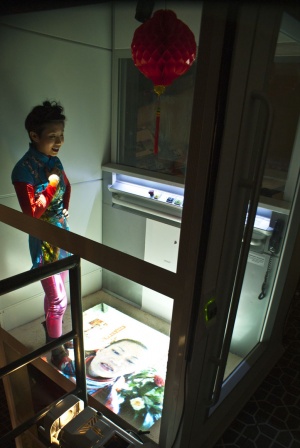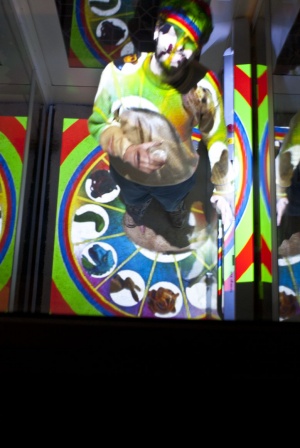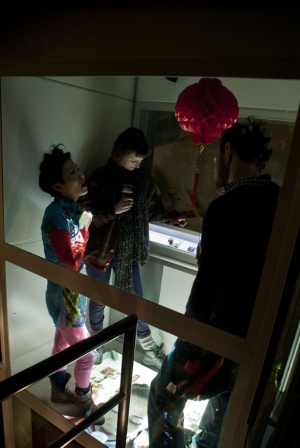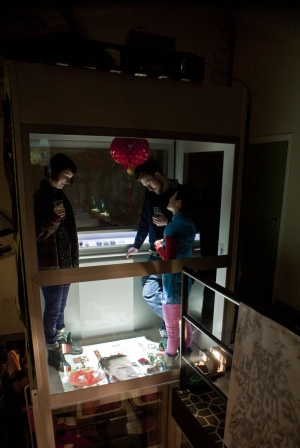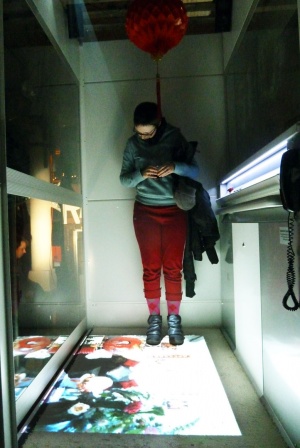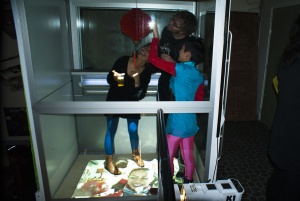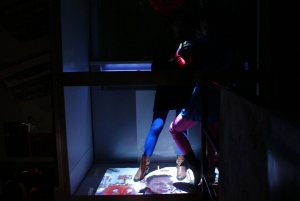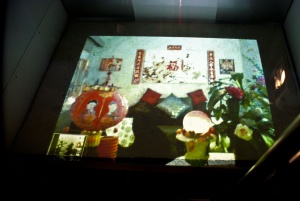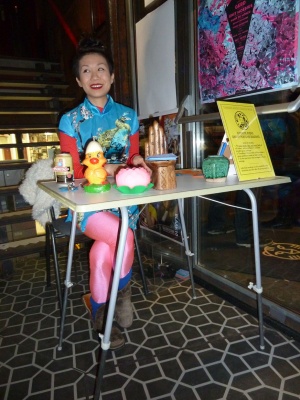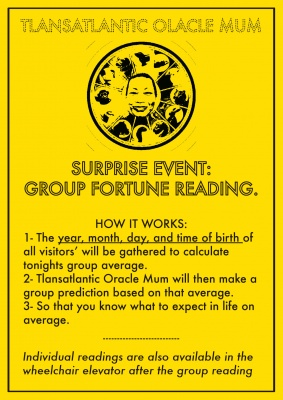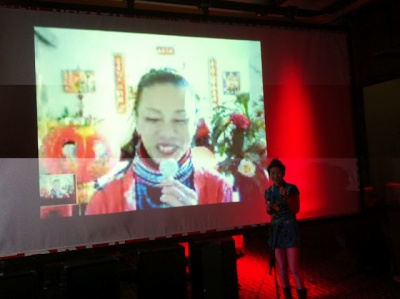User:Amy Suo Wu/tlansatlantic olacle mum
The Invitation
On Feb 2nd WORM hosted a night revolving around one of Ai Wei Wei's latest films in the IFFR program. The event was to be a 'full-on Chinese meatspace-rip a la fake' extravaganza in typical Hajo (director of WORM) style. Quite possibly owing to my Chinese genetics, I was invited to 'something'. After brainstorming with the moddr peeps, it suddenly occurred to me that I should involve my mother since she has played a pivotal role in shaping my view and fascination towards the cultural practice of fortune telling. For years she has been invited by an Asian organisation during Chinese New Year to read the guests' fortune at their annual dinner banquet. More recently she has also been asked by a local Chinese radio station to read the callers fortune. However due to personal circumstances she couldn't attend this years dinner banquet so I thought to carry on her tradition virtually in Rotterdam. I also I saw this as an opportunity to experiment with various environmental settings which could support and better facilitate the reception of prediction to a live audience and perhaps gain some more insight from practical experience. But most importantly I wanted to keep it fun for my mother and for the visitors.
The Act
- my invitation was approved by mum and then beautifully animated by miss birgit bachler
- all photos below made by timB, birigtB, dennisB and rachelS
Streamed live via Skype from my mother's living room in Sydney, my mother and I formed the TLANSATLANTIC OLACLE MUM act, performing a contemporary Chinese fortune-telling duo reminiscent of a circus show from early last century. This act consisted of two events:
PART ONE – An one on one experience of which was divined in the twilight zone of the wheelchair elevator shaft, where mummy Ling Qing aka Maria calculated the lucky visitor's fate while I mediated it (translating her Chinese into English and sometimes re-interpreting information to better suit the person). For this occasion my mother used an ancient numerological practice called the Four Pillars of Destiny, by which the year, month, day and time of birth is added up and interpreted to gain insight into character traits, destiny and/or specific questions asked by the visitor. Although feeling somewhat intimate while inside the elevator, the transparent wheelchair shaft also became a stage of spectacle where the crowd outside gathered around watching the interaction between me (the translator) mediating my mother (the medium) while interacting with the visitor(s) inside. In this semi-intimate space, her image was beamed onto the elevator floor from a makeshift ceiling which supported a laptop, projector, speakers and a webcam. Visitors had to negotiate looking down to see her face while looking up at the webcam for my mother to see theirs. Due to the unanticipated (extremely loud) noise level, I also resorted to gesturing numbers into the webcam while sometimes shouting into the microphone above, an action which must have looked like I was yelling towards a higher force in the heavens...
PART TWO – A public group fortune reading which took place in the big hall upstairs. Although using the same numerological method as the individual readings, I instead gathered all the visitors' Four Pillars of Destiny (year, month, day and time of birth) and an averaging program written especially for this event by Dennis de Bel was able to calculate that nights group average which happened to be 11-09-1975 11:30:00. This groups average birth date and time was then given to my mother to calculate and further predict – an absurdity as it was for nobody and everybody at the same time. The conceptual reasoning for a public group fortune reading is based on the notion of averaging in statistical methods of prediction. In Marie-Luise von Franz's book, "On Divination and Synchronicity: The Psychology of Meaningful Chance Studies in Jungian Psychology", she writes about an average as an abstraction existing only in our minds as it doesn't actually exist, for the actual accumulation of people is an accumulation of unique cases. An average is therefore only a mathematical construct which ignores individual cases to simply allow us to deal with a class as a whole. Though I was quite excited about this part conceptually, it wasn't so successful in terms of comprehension. It could've been many factors; perhaps my explanation wasn't clear enough for the audience; or that I should've started earlier before people started getting really drunk; perhaps it was not the right setting i.e. should have been at a non-party event. But all in all, I think I could really use and develop this part of the performance into something interesting and yet absurdly reflective of today's statistical practices. I also wish to look at the code that Dennis made and possibly expand it's functionality to cover for various datasets.


